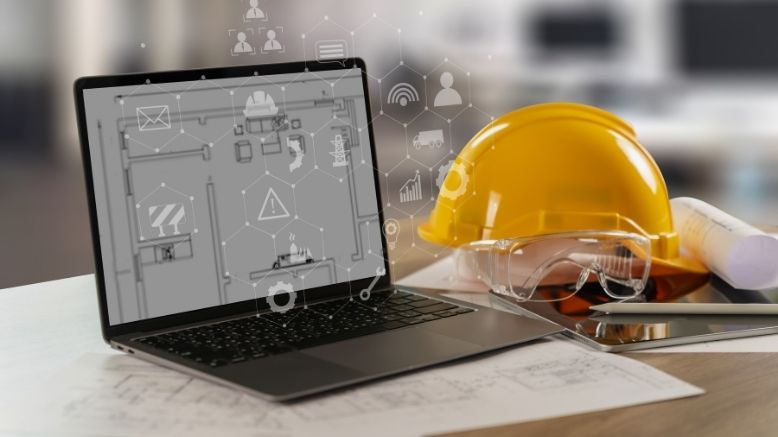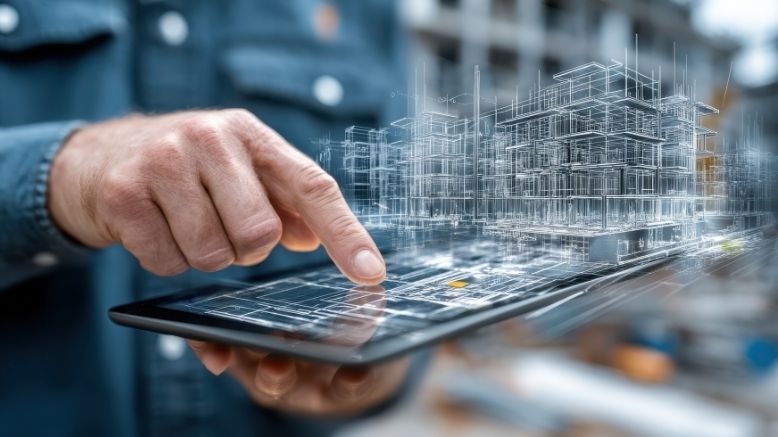Related Articles
— 5 min read
Getting the Most From Using AI for Construction Drawings

Last Updated Dec 3, 2025

Julia Tell
Contributing Writer
64 articles
Julia Tell is a freelance writer covering education, construction, healthcare, and digital transformation. She holds a Ph.D. in Media & Communications and has written for publications including Business Insider, GoodRx, and EdSurge, as well as nonprofits, international businesses, and educational institutions.
Last Updated Dec 3, 2025

Using AI for construction drawings can provide real-time interpretation of architectural designs to improve planning and coordination.
This article examines the challenges and transformative potential of AI in construction drawings, including AI’s ability to enhance efficiency and accuracy while also addressing integration challenges and future trends, like AI-powered 3D printing.
Table of contents
Why use AI for construction drawings?
From automating mundane tasks to providing deep insights from complex data, AI is already changing the way projects are planned, executed and managed. By analyzing data and offering instant feedback, AI can automate tasks that would typically require input from professionals, allowing them to address these issues before construction begins.
Utilizing AI for construction drawings can help a real-time view of architectural plans, quickly analyze data, automate repetitive tasks and even optimize drawings for sustainablility and cost.
Plus, integrating of AI with tools like Building Information Modeling (BIM) enhances collaboration and efficiency. While AI applications in drafting, clash detection and design optimization reduce errors and improve sustainability, challenges such as initial investment and integration complexity remain.
Yet, AI is a potent force that is accelerating change in the industry, providing undeniable time savings and financial benefits.
For building owners who are already using BIM, they should consider integrating AI into their workflows, because it can help streamline processes.

Nicholas Tilford
Senior Trainer, Industry Advancement
Procore Technologies
3 Key Challenges of Using AI for Construction Drawings
The current challenges of using AI in construction drawings revolve around managing large drawing sets, mitigating errors that lead to time-consuming manual delays and finding the right balance between human and AI creativity.
1. Large sets of drawings can have too much data.
As the complexity of modern construction projects increases, AI can interpret the extensive drawing sets required.
However, large data volumes can overwhelm AI, impacting efficiency and even minor misinterpretations can result in costly errors, delays or compliance issues.
2. Errors can cause substantial delays.
While AI can expedite many processes, errors in algorithms or data interpretation can still occur, necessitating manual intervention that can delay project timelines.
A minor oversight in an automated workflow can lead to inconsistencies, resulting in inaccuracies in cost estimates, material orders or timelines. This is why the human element is still so important when working with AI.
3. Human and machine hours can stack.
Blending AI's capabilities with human creativity remains a delicate task, as making sure that AI enhances rather than stifles innovation and creativity is challenging. Plus, any error by humans or automation can lead to a trail of problems and a domino effect of delays.
Poor or inadequate input data can lead to incorrect predictions, unintended biases and even "hallucinations" that mislead decision-makers.
Free AI in Construction Course with Hugh Seaton
Start learning today with industry expert Hugh Seaton and discover how AI can boost efficiency, reduce risk, and transform your projects.

Benefits of AI for Construction Drawings
Leveraging AI in construction drawing offers significant advantages, boosting precision, enabling data-informed decision-making and collaboration while reducing costs and risks.
AI can significantly boost project efficiency and accuracy by automating repetitive tasks like drafting and revisions, which can accelerate project timelines. This automation also helps to improve precision in designs by minimizing human error, resulting in higher-quality outcomes and fewer costly mistakes during construction. This way, architects and engineers to focus on more innovative design solutions and have the time to take a more creative approach to their work.
Another key benefit of using AI during the design phase is the way it enhances team coordination and communication. AI tools can help teams collaborate seamlessly by providing real-time updates and insights, which keeps everyone aligned and informed throughout a project. This helps to make sure there are fewer inconsistencies and potential clashes in design plans, reducing the likelihood of costly mistakes. Additionally, AI can uses predictive analytics to identify potential structural issues or safety hazards, prompting proactive solutions that can reduce or prevent on-site problems.
5 Automated Technologies to Use With Construction Drawings
AI system features have numerous applications when working with drawings and documentation on a construction project.
u003cstrongu003eMachine Learningu003c/strongu003e
AI systems utilize feedback from previous projects, both positive and negative, to refine construction plans, leading to more efficient and practical designs.
u003cstrongu003eComputer Visionu003c/strongu003e
This deep learning technology allows AI to scrutinize blueprints and 3D models, identifying potential mistakes and inconsistencies in specifications and dimensions.
u003cstrongu003eChatbots and AI Agentsu003c/strongu003e
AI Agents facilitate real-time communication of changes made to drawings or designs by architects or engineers, keeping clients and collaborators informed and up-to-date.u003cstrongu003eGenerative AIu003c/strongu003e
Generative AI can help automate design tasks by generating multiple design options. The best design is selected based on factors such as cost, materials and environmental considerations.
u003cstrongu003eNatural Language Processing (NLP)u003c/strongu003e
Enables the extraction of data from extensive sets of plans and written communications, allowing teams to scan for relevant information on any query quickly.
Current & Future Trends for Using AI for Construction Drawings
With the rising advancements in machine learning and automation, integrating AI into workflows can improve overall team efficiency for construction companies seeking to remain competitive. Recent advancements include the following.
Faster Blueprint Rendering
Machine learning enables quicker rendering of blueprints, reducing the time from conception to execution and allowing for rapid iterations.
u003cstrongu003eEnhanced Document Processingu003c/strongu003e
AI automates document handling, streamlining tasks such as data extraction and organization, which accelerates the workflow and minimizes human error.
Seamless Integrations
AI tools are increasingly integrating with project management software, enhancing interoperability and making it easier for teams to adopt and benefit from AI technologies.
u003cstrongu003eImproved Collaborationu003c/strongu003e
AI facilitates better collaboration by providing real-time updates and insights, enabling teams to work more cohesively across different phases of a project.
There are several possibilities for trends in the near future as well: The future of construction drawings is poised for transformative advancements such as AI-powered 3D printing, which is set to change how structures are built, allowing for rapid prototyping and construction with unprecedented precision and efficiency.
Predictive design creation could become a reality, where AI systems autonomously generate optimized design solutions based on vast datasets, factoring in elements such as cost, sustainability and structural integrity.
In addition to new applications for the technology, seamless AI software integrations will likely become standard, which can provide more cohesive workflows and enhance collaboration across various platforms and teams. However, the knowledge and judgement of the humans is necessary to shape how technologies are used and avoid the pitfalls and confusion that AI can cause.
As these technologies evolve, construction teams must adapt to the increasing pace of automation. Embracing these changes will require shifts in workforce training, investment in new technologies and a willingness to innovate traditional processes. By doing so, the construction industry can fully harness the potential of AI, driving future projects towards greater efficiency, safety and creativity.
Was this article helpful?
Thank you for your submission.
0%
100%
You voted that this article was . Was this a mistake? If so, change your vote
Scroll less, learn more about construction.
Subscribe to The Blueprint, Procore’s construction newsletter, to get content from industry experts delivered straight to your inbox.
By clicking this button, you agree to our Privacy Notice and Terms of Service.
Thank you!
You’re signed up to receive The Blueprint newsletter from Procore. You can unsubscribe at any time.
Categories:
Written by

Julia Tell
Contributing Writer | Procore Technologies
64 articles
Julia Tell is a freelance writer covering education, construction, healthcare, and digital transformation. She holds a Ph.D. in Media & Communications and has written for publications including Business Insider, GoodRx, and EdSurge, as well as nonprofits, international businesses, and educational institutions.
View profileExplore more helpful resources

AI Construction Tools: Optimizing Every Stage of Construction
Builders, like everyone else, are being bombarded with information about incorporating AI into their work. However, determining which areas to automate can be challenging. This article explores the features of...

Construction Technology Data Analytics: The New Standard in Construction
Much of the newest wave of construction technology is impressive: drones performing site surveys, 3D printers manufacturing walls on-site, 360° reality-capture cameras, and more. But all this visible technology collects...

Construction Document Management Software: Revolutionizing Documentation
Managing the numerous and intricate details of modern construction projects can be a daunting task. Construction document management software is a cloud-based digital platform that transforms how all that project...

How Construction Technology is Transforming Safety, Efficiency, and Sustainability
The construction industry is taking part in a remarkable transformation as the sophistication and availability of construction technology have exploded in recent years. The term “construction technology” has become a...
Free Tools
Calculators
Use our calculators to estimate the cost of construction materials for your next project.
Templates
Find a template to help you with your construction project tasks.
Material Price Tracker
Get the latest U.S. retail prices and view historical trends for common building materials.
Glossary
Explore key terms and phrases used in the industry.
